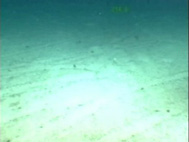Bottom trawls
Otter and pair trawls (Roller and Rockhopper gear).
 Bottom trawls have historically been used on relatively shallow (<200m) areas, but are now used in deeper and stonier habitats. In these deep-water areas it is necessary to protect the gear using Roller and Rockhopper gear. Heavy rubber or metal rollers are attached along the footrope to prevent the gear from snagging on seabed obstacles. Large chunks of coral are sometimes brought up in trawls; whilst trawls leave crushed coral along their tracks (see Figure 1). Most bottom trawls are held open by two otter boards. These boards help to keep the nets open but also plough into the substrate creating plumes of sediment which encourage fish into the nets. Some of the biggest otter boards can be several metres high, weigh 6 tonnes and can plough furrows 0.2 – 2m wide by 30cm deep. Bottom trawls have historically been used on relatively shallow (<200m) areas, but are now used in deeper and stonier habitats. In these deep-water areas it is necessary to protect the gear using Roller and Rockhopper gear. Heavy rubber or metal rollers are attached along the footrope to prevent the gear from snagging on seabed obstacles. Large chunks of coral are sometimes brought up in trawls; whilst trawls leave crushed coral along their tracks (see Figure 1). Most bottom trawls are held open by two otter boards. These boards help to keep the nets open but also plough into the substrate creating plumes of sediment which encourage fish into the nets. Some of the biggest otter boards can be several metres high, weigh 6 tonnes and can plough furrows 0.2 – 2m wide by 30cm deep.
View World Wildlife Fund movie showing European deep-sea coral reefs.
|
